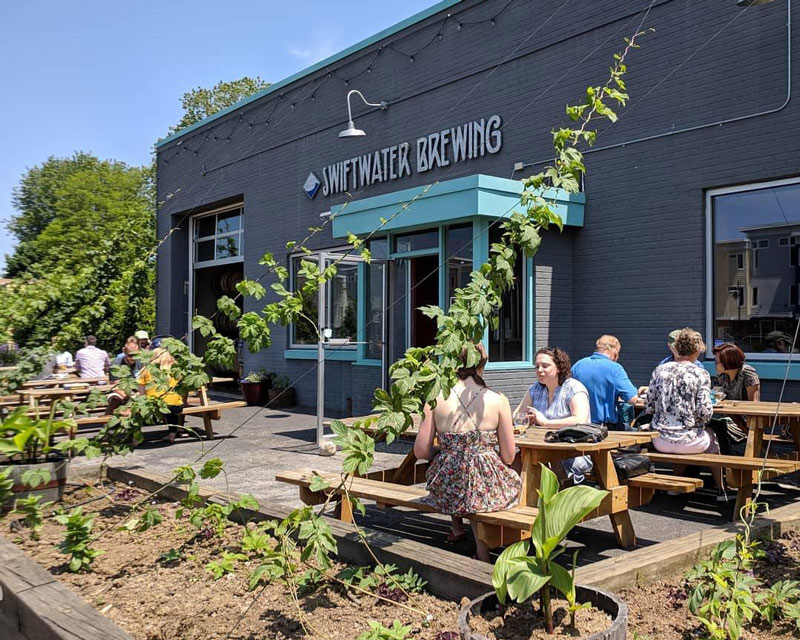Swiftwater Brewing Co
Further reduce water, chemistry, and natural gas consumption
 Swiftwater Brewing Company, in Rochester, New York, has steadily grown each year, producing approximately 1,200 barrels of beer in 2019. The brewery offers a bar with a full restaurant menu. In February 2020, a Pollution Prevention Opportunity Assessment was conducted to evaluate the brewing process and improve their environmental footprint. This assessment was done in collaboration with the New York State Pollution Prevention Institute (NYSP2I) at Rochester Institute of Technology (RIT) and Cornell University’s Cornell Enology Extension Laboratory (CEEL).
Swiftwater Brewing Company, in Rochester, New York, has steadily grown each year, producing approximately 1,200 barrels of beer in 2019. The brewery offers a bar with a full restaurant menu. In February 2020, a Pollution Prevention Opportunity Assessment was conducted to evaluate the brewing process and improve their environmental footprint. This assessment was done in collaboration with the New York State Pollution Prevention Institute (NYSP2I) at Rochester Institute of Technology (RIT) and Cornell University’s Cornell Enology Extension Laboratory (CEEL).

Achievements to date
Swiftwater currently incorporates sustainability into many of their operations. To reduce water use, Swiftwater reuses both dirty caustic solution and water from the kettle to clean the brewery floors, when feasible. This lowers its overall impact on the local wastewater system and improves the brewery’s water-used-to-beer-produced ratio, a key indicator of sustainability within brewing. To minimize the solid waste generated from the brewing process, Swiftwater sends their spent yeast, grain, trub, and hops to a pig farmer. In addition, cryohops, which provide a significant amount more flavor per weight than normal hops, are used to decrease wastes.
Swiftwater also uses a heat exchanger to preheat water before it enters the brewing process or acts as a cleaning solution. The heat exchanger preheats water entering the brewing process and it acts as a coolant for the wort before it enters the fermentation step. When the heat exchanger cannot be used or would be ineffective, Swiftwater uses an oversized chilling system to manage temperature. The use of energy that would be lost otherwise to either heat or cool is a powerful tool for reducing environmental impact.

Opportunities
After performing a site assessment of Swiftwater, NYSP2I and CEEL specialists made a series of recommendations to improve the brewery’s sustainability strategy. These are listed below.
To reduce water and chemical use:
- Install conductivity meters on the tanks to determine when the last of the cleaning has exited the tank. With this increased water control, water consumption would decrease.
- Utilize the final rinse solution of one cleaning cycle as the first rinse of the next to reduce both chemical and water usage from the brewery’s cleaning processes.
To be more energy-efficient:
- Add a glycol loop outside the building to reduce energy consumption. A glycol loop would exist at outdoor temperatures. In the summer, it would preheat water beyond the 80-F start point and, in the winter, cool it for pre-fermentation streams. Additionally, a more permanent heat-exchanging system could be setup outside to take more advantage of energy transfer than the mobile system currently in use at Swiftwater.





